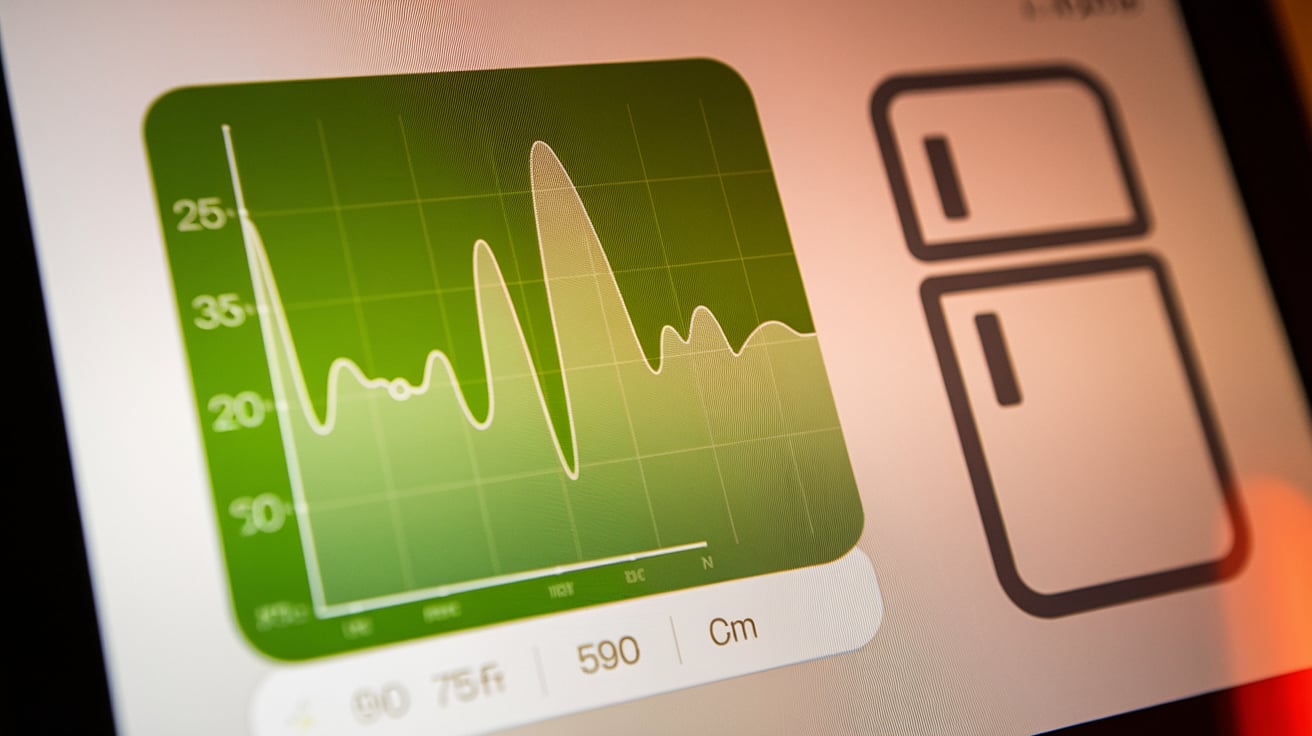Physical Address
304 North Cardinal St.
Dorchester Center, MA 02124
Physical Address
304 North Cardinal St.
Dorchester Center, MA 02124

Discover if countertop ice makers use a lot of electricity! Unveil power consumption facts and energy efficiency insights!
Thinking about getting a countertop ice maker? Let’s see why these nifty little machines might just be your next best friend in the kitchen. We’ll also look at a few key things you should know before adding one to your cart.
Imagine having ice whenever you want it, without juggling clumsy ice trays or running to the store for a bag. That’s the magic of countertop ice makers! They’re compact, fit snugly into small spaces like your kitchen, office, or even your RV, and churn out ice faster than you’d expect. Perfect for cooling down drinks or whipping up icy treats, it’s like having your personal ice dispenser—minus the fuss and mess.
And if you’re curious about any drawbacks, we’ve got a piece on that too. Just pop over to our article on what are the cons of a portable ice maker?.
So, you’re almost convinced, but what should you keep in mind before buying one? First off, pay attention to ice production and storage capacity. Does it meet your needs without being too much or too little? Also, consider the size of the ice cubes it makes—are you more of a nugget or a classic cube person? Maintenance is another thing to check. You don’t want a machine that demands more attention than your plants.
Don’t forget to peek at how much electricity it uses. Want to know if it’s a power hog or a meek little sipper? Take a look at our detailed article on do countertop ice makers use a lot of electricity?.
By weighing these factors and aligning them with what you really need, you’ll be better prepared to decide if this appliance deserves a spot on your countertop.
Thinkin’ ’bout gettin’ a new countertop ice maker? Hold up! Before you dive in, let’s chew on that bit about its electricity munching habits. These little guys might look harmless, but they can nibble at your utility bills depending on how much they chug.
Countertop ice makers are usually energy-smart, but their sip of power ain’t always the same. Why? Well, thanks to:
Just so you get the drift, take a peek at the usual power sip and what it might add up to in bucks if you run it for 3 hours a day:
| Ice Maker Size | Average Wattage | Estimated Monthly Cost (3 hrs/day) |
|---|---|---|
| Small | 100-150W | $2-$3 |
| Medium | 150-200W | $3-$4 |
| Large | 200-250W | $4-$5 |
Different strokes for different folks, and different volts for different makers. Here’s what might beef up the bills:
Being savvy ‘bout these can help you keep control of those pesky power costs. Wanna know more tricks for saving dough on electricity? Check out our guide over at energy-saving tips.
Oh, ice lovers, have we got a showdown for you! It’s the bout between the unassuming countertop ice maker and the heavyweight champ, the traditional built-in ice maker. Let’s take a close look at which one wins in terms of electricity usage and Mother Nature’s approval.
Countertop ice makers? They’re the green machines. Unlike their traditional buddies, which hang out in your fridge and munch on electricity like it’s 24/7 snack time, these mini marvels only work when prompted. They’re like the friend who only visits when invited, which means lower electricity bills at the end of the month. Here’s a little snapshot for comparison:
| Ice Maker Type | Annual Electricity Use (kWh) |
|---|---|
| Countertop Ice Maker | 100 – 200 |
| Traditional Built-in Ice Maker | 300 – 500 |
The numbers don’t lie—those countertop whiz kids are more efficient, leaving your wallet a little heavier.
Going green? These nifty countertop units help you wave the eco-flag high. Less energy? That’s fewer emissions puffing out. Plus, since they churn out ice on command, there’s none of that ice hoarding business. It means you’re not throwing away energy-captured water either.
On the flip side, traditional ice makers are the hungry giants, demanding a chunkier slice of the energy pie. Their constant running isn’t just tough on your electric bill; it’s also not winning them any environmental awards. They yank down your fridge’s efficiency, stretching the planet’s patience.
If you’re wrestling with a choice between the modern marvels perched on your counter or the old-school icers nestled in your fridge, lean towards the cooler, cleaner option. Countertop ice makers may just be the favorite contender for those who want their ice with a side of sustainability.
With this showdown wrapped up, you’re armed with the know-how to pick your icy sidekick—be it the peppy countertop hero or the classic convenience in your cooler’s nook. Your choice decides not just your ice needs, but your environmental footprint too.
Trying to save some bucks and be a bit kinder to ol’ Mother Earth while still enjoying the convenience of your countertop ice maker? You’re in luck! We’ve got some nifty tips to help you cut back on the juice your ice maker guzzles.
By following these tips and tricks, you’re not just managing your ice maker—you’re making it work smarter, not harder. You’ll enjoy icy beverages and won’t dread the electricity bill!